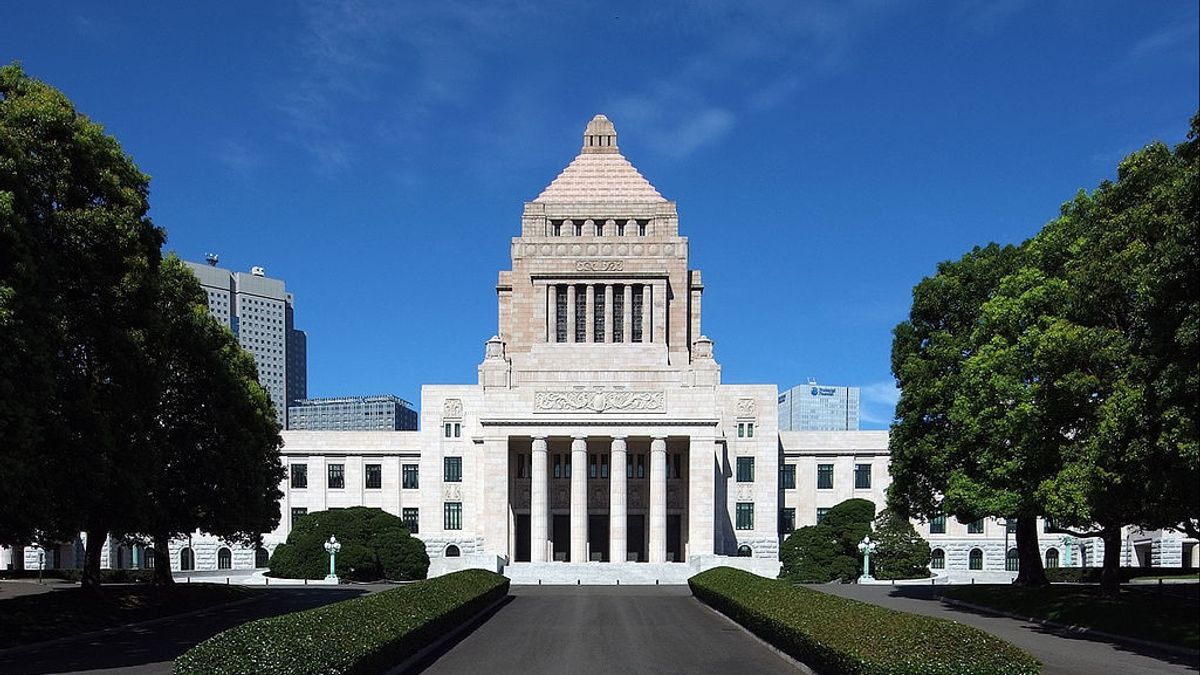JAKARTA - Indonesia is not the only country that has moved its capital city. Japan used to have a similar plan. However, the idea is just a talk because it might be a crazy budget.
Before Tokyo, the capital city of Japan was Kyoto. Tokyo, previously known as Edo, flourished after Tokugawa Ieyasu established the Tokugawa shogunate in the city in 1603. As the political and cultural center of Japan, Edo grew into a large city with a population of over one million in the mid-18th century.
During this time, the Emperor resided in the palace located in Kyoto, which is the official capital of the country. The Tokugawa shogunate ended and imperial power was vested in Emperor Meiji. Emperor Meiji moved to Edo, which changed its name to Tokyo. Tokyo was finally fully the capital of Japan.
Citing the Tokyo Metropolitan Government, at that time Edo was not only the capital but a major trading center. At one point, Edo's economy shot up, surpassing even that of Kyoto. Also, the Heian Palace in Kyoto lost control of some areas such as Tendai with Buddhist rebels attacking the city constantly.
However, if you look at historical records, no official decree or announcement is confirming the change of the capital city from Kyoto to Tokyo. After the surrender of the Tokugawa shogunate around 1868, Emperor Meiji was still very young at only 15 years old. Even though he was crowned emperor at that time, his real power was in the hands of the oligarchs.
The oligarchs wanted to move the capital to Edo so they could have ultimate power over trade and access to the west. They changed the name Edo to Tokyo, which means "eastern capital".

Jumbo budget
As quoted in the journal The City Planning Institute of Japan (CPIJ, in November 1990, The National Diet, or the House of Representatives in Japan, passed a resolution on the relocation of the central government. The reason the Diet and other governments had to be relocated was to eliminate the excessive concentration of activity in Tokyo and level the economy across all areas of Japan.
In December 1992, the Diet passed the Act for the Relocation of Diet and Other Governance. The relocation of the capital's functions, such as the Diet, Supreme Court, and central government ministries, is planned to be moved to somewhere within 60 to 300 km of Tokyo. The report estimates that the site will have a population of 600,000.
At that time, the cost of the relocation was estimated at 14 trillion yen, not including money to build airports, roads, and railways. The biggest cost was for land purchases, estimated at 5 trillion yen. However, relocation costs were lowered in 1998, in response to criticism from groups who opposed relocation.
Three places are offered to be a place for the relocation of government functions. First, the Tochigi-Fukushima region and the Gifu-Aichi region. The two areas of Ibaraki, which have the advantage of being free from the risk of natural disasters and are expected to play a role in supporting the Tochigi-Fukushima region.
Then the last choice of Mie-Kio area. It is estimated that the transfer will be carried out in stages.
In 2007, the Japanese government's central relocation campaign resonated. Gifu-Aichi and Mie-Kio were again mentioned as the region's choices. However, until now, the transfer of the center of government is still in the form of a plan.
*Read other information about the NEW CITY or read other interesting articles from Putri Ainur Islam.
Other BERNAS
SEE ALSO:
The English, Chinese, Japanese, Arabic, and French versions are automatically generated by the AI. So there may still be inaccuracies in translating, please always see Indonesian as our main language. (system supported by DigitalSiber.id)














